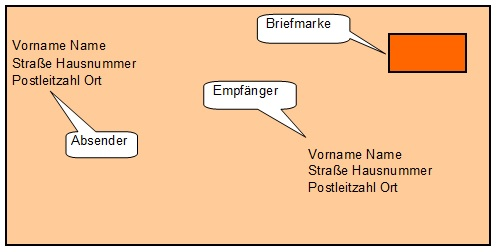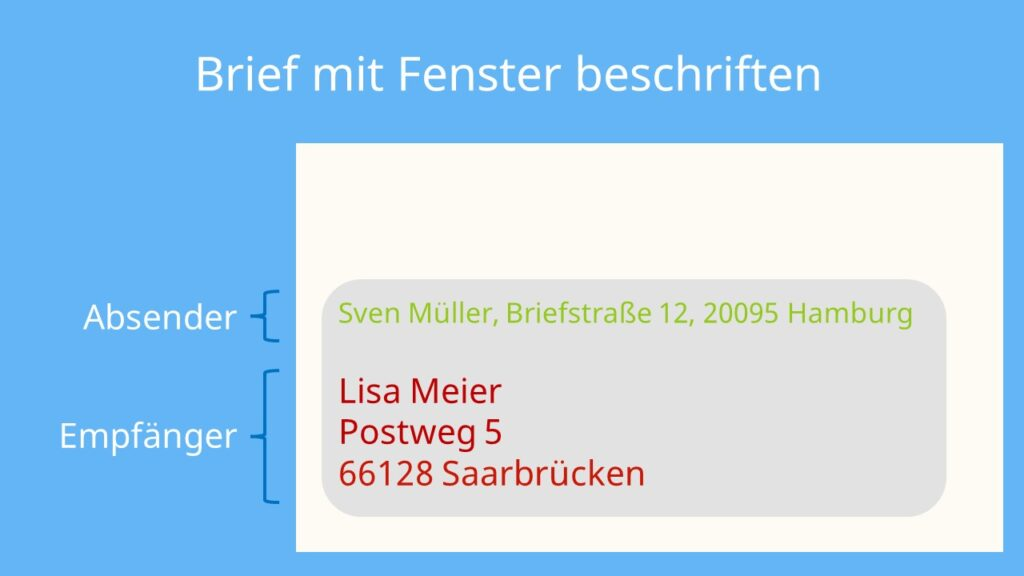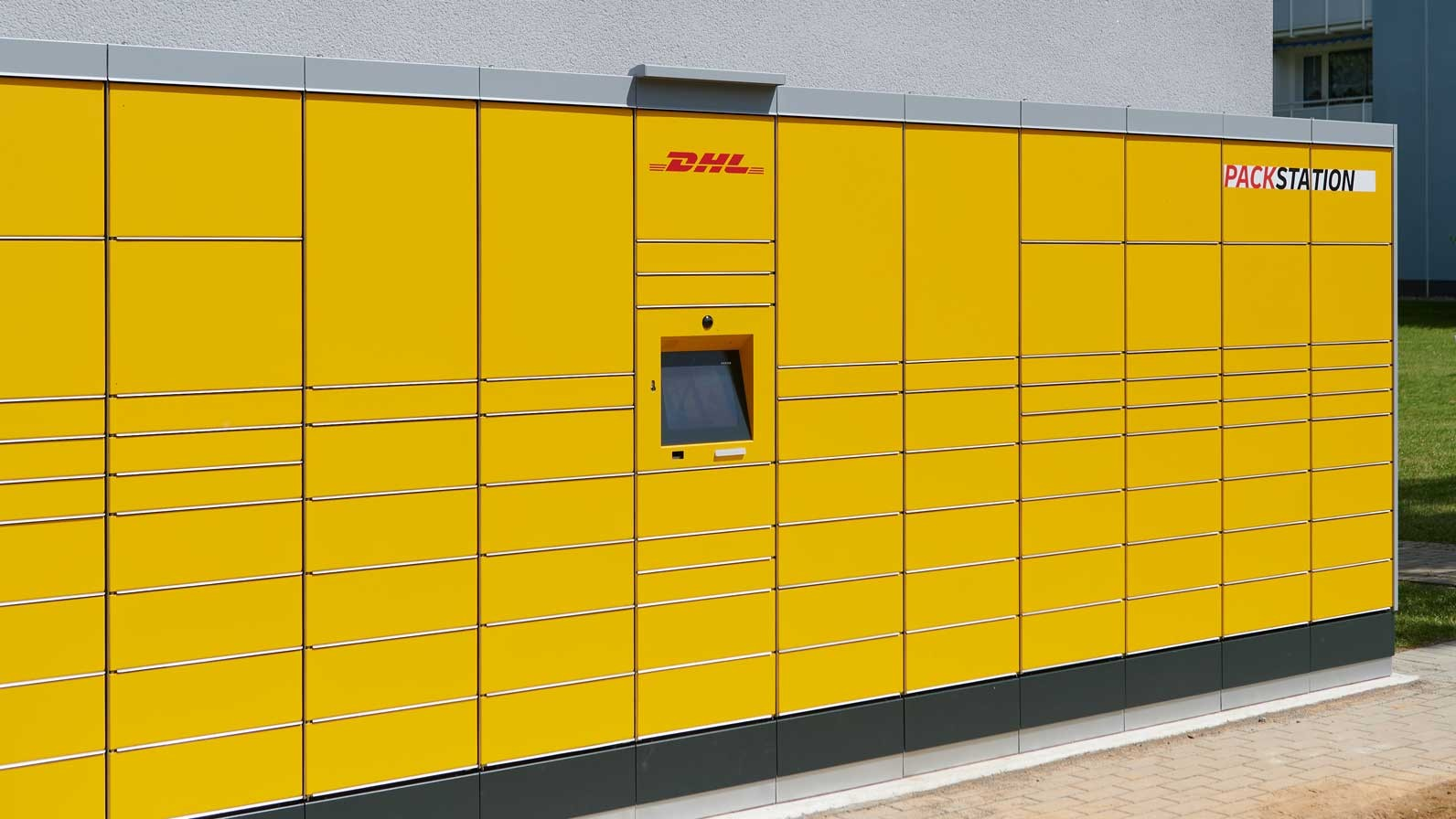Germany Post
When you move to Germany, the first thing you may notice is an endless amount of mail in your letterbox. That's because the post office is running like clockwork here and everyone is sure to take advantage of it. But receiving letters is one thing and sending them is another. If you don't speak German, a simple task like sending a letter can be a real challenge. A colleague of mine from India told me that her first letter in Germany was returned home because she had filled something in incorrectly. Let's have a little look into what's so complicated.
Signing the envelope
The letter was written, packed in an envelope, but it was still too early to go to the post office. The first question I asked myself was, "Where should I write this address? The rules are actually quite simple - on the front, on the bottom right, write the recipient's address in the format "First Name - Last Name - Street, House Number - Index, City".

Empfänger - recipient, Absender - sender, Vorname Name - name and surname,
Straße Hausnummer - street and house number,
Postleitzahl Ort - index and city or town
The picture above suggests that the sender's address should be written on the front of the envelope in the top left-hand corner, but I write the sender's address on the back of the envelope in a single line at the top. That's what the post office told me to do and it hasn't let me down yet. If the envelope has a window, you can put the sender's and recipient's addresses in the window, but fold the letter so that the addresses are in the window on the envelope:

Empfänger - recipient, Absender - sender
It is a mystery to me how many and which stamps to put on an envelope. You can buy envelopes with printed stamps and that should be enough to send a letter to Germany. If you have mastered this stamp system, your next trip to the post office is replaced by a walk to the nearest post office box into which you should drop your letter. Usually there are two yellow boxes for two kinds of indices - domestic (usually city and suburb) and everything else. You choose the right box and drop your letter in, nothing complicated. It also says on the box how often the letters are picked up:

Ways of sending a letter
If you want to send a letter with notification or just haven't sorted out the stamps like I have, you will have to go to the post office and probably stand in line for a bit. Then the friendly post office staff will ask you how you want to send your letter. The following options are available:
- Standard - the most common dispatch, without additional options, costs from 0.85 Euro depending on the weight of the letter. 0.85 Euro for a maximum of 20g or 3 A4 pages; 1 Euro for a maximum of 50g or 8 A4 pages
- PRIO - Priority delivery, if possible on the next working day. The status of the letter can also be tracked online. You will have to pay €1.10 extra for priority mailing on top of the standard mailing
- Einschreiben Einwurf - you will receive a code that can be used to track the letter's status on the Deutsche Post website. The post office will add EUR 2.35 to the cost of the standard postage. The option is suitable for sending documents - sick leave to your employer, applications to the Auslaenderbehoerde, etc.
- Einschreiben - registered letter against your signature. You still receive a tracking number as with the previous option, but the letter is delivered to the address and handed to the person against signature. This option increases the standard delivery by €2.65.
- Einschreiben Eigenhändig - for an additional 4.85 euros on top of the standard postage, the letter will be delivered under the personal signature of the recipient or someone in loco parentis. There is also a number available to track the status of the letter
- Einschreiben Rückschein - It is the same as the previous option, but you will be asked to fill in a pink slip which will be sent back to you as confirmation that the letter has been delivered, indicating the date and time the letter was delivered. Additionally, a photograph of the letter with the recipient's signature will be available to you via a unique number. This option is good if you want to have proof of delivery of your notice in case there are any further court proceedings.
Returns of online orders via Deutsche Post or DHL
Many online shops also use German postal services to deliver their goods to customers. Usually you have at least 14 days (or more, depending on the shop) to return the goods if they do not fit or are of inadequate quality. Some shops put a return sticker in the parcel, others ask you to fill in a form on the website, print it out and stick it on the box for return shipment. You can send your purchase back to the shop at any post office, but there are a couple more options for returns:
- Post Office Packstation - Open 24 hours, just scan the barcode on the sticker, choose the size of the parcel and if there are empty boxes, lock the parcel in the box. You can enter your email address to receive confirmation of acceptance.

- Give returns to DHL courier - Give returns to DHL courier - not many people know about this, but the delivery service is ready to collect your returns, as well as parcels that do not require additional payment. You just need to tell the courier that you would like to send your parcels and there is no need to go anywhere! One point - the courier has to bring you a new parcel, he will not just come to you. In any case, if you are returning shoes, dresses or other clothes that do not fit, you have probably already ordered the same but in the correct size, so you can simply wait for the courier with the new parcel and give him a pre-prepared return box.
